Recent Posts
Grateful, Safe, and Prepared: Thanksgiving Tips
11/19/2024 (Permalink)
Thanksgiving is a time to gather with loved ones, enjoy a delicious meal, and reflect on what we’re thankful for. At SERVPRO of New Hyde Park/Mineola, we’re grateful for the opportunity to serve our community, and we want to help ensure your holiday is as safe and stress-free as possible.
Here are some tips to keep your Thanksgiving celebrations safe and memorable!
Stay Safe in the Kitchen
The kitchen is the heart of Thanksgiving, but it’s also where most holiday accidents happen.
Stay Focused While Cooking:
- Never leave your stove or oven unattended, especially when frying, grilling, or broiling food.
- Use timers as reminders to check on your dishes.
Keep Flammable Items Away:
- Ensure pot holders, dish towels, and paper products are kept at a safe distance from heat sources.
Use Turkey Fryers Safely:
- Only use fryers outdoors on a flat, non-flammable surface.
- Ensure your turkey is completely thawed and dry before frying to avoid oil splatters and fires.
Fire Prevention Tips
With extra cooking and candles around, fire hazards increase during Thanksgiving.
- Check Your Smoke Alarms: Test smoke alarms to ensure they’re working properly.
- Be Cautious with Candles: Opt for flameless candles or place traditional candles on sturdy surfaces away from children and pets.
- Have a Fire Extinguisher Ready: Make sure it’s easy to access and that you know how to use it.
Preventing Holiday Water Damage
If you’re hosting guests or traveling for the holiday, take precautions to avoid water issues:
- Clear Your Drains: Avoid pouring grease or oils down the drain to prevent clogs.
- Check Your Appliances: Inspect dishwashers and refrigerators for leaks or loose connections before the big day.
- Prepare for Freezing Temperatures: If traveling, set your thermostat to at least 55°F to prevent frozen pipes.
Protect Your Guests
With more people in your home, safety is key.
- Watch for Trip Hazards: Keep walkways clear of clutter and secure rugs or cables.
- Light Up Outdoor Areas: Ensure your porch and driveway are well-lit for evening gatherings.
Be Prepared for the Unexpected
Sometimes, accidents happen—even on holidays. If fire, water, or mold damage occurs, SERVPRO of New Hyde Park/Mineola is here to help. Our team is available 24/7 to provide emergency restoration services, ensuring your home gets back to normal as quickly as possible.
Happy Thanksgiving from SERVPRO®!
We’re thankful for the trust our community places in us year-round. From all of us at SERVPRO of New Hyde Park/Mineola, we wish you a joyful, safe, and delicious Thanksgiving!
Winter Water Mitigation: Protecting Your Property During the Cold Months
11/14/2024 (Permalink)
As winter approaches, many property owners face an increased risk of water damage due to freezing temperatures, snow, and ice. Water mitigation—the process of reducing or preventing water damage—is especially crucial during the colder months when issues like frozen pipes and ice dams are more likely to arise. With proactive steps, you can protect your property from costly winter water damage. Here’s how to stay ahead of potential problems and ensure your home or business remains safe and dry this winter.
Common Winter Water Damage Risks
Frozen Pipes
When temperatures drop below freezing, the water inside your pipes can freeze and expand, leading to cracks and bursts. A burst pipe can release gallons of water, causing extensive damage in a short amount of time.
Ice Dams
Snow accumulation on your roof can melt and refreeze at the roof’s edges, forming ice dams. Ice dams block proper drainage and cause water to back up under shingles, leading to roof leaks and water damage in attics and ceilings.
Snow Melt and Flooding
Rapid snow melts or heavy rain on top of snow can lead to flooding around your property, especially if gutters and drains are clogged. Water seeping into basements or foundations can cause long-lasting damage.
Condensation and Humidity
Cold weather can lead to increased condensation on windows and walls, creating a damp environment where mold and mildew can thrive. Without proper ventilation, excess moisture can lead to water damage inside the property.
Winter Water Mitigation Tips
Insulate Pipes
Protecting pipes from freezing is key to preventing burst pipes:
- Wrap pipes in unheated areas, like basements, garages, and attics, with foam or fiberglass insulation.
- Let faucets drip slightly in very cold weather to keep water flowing and relieve pressure.
- Keep cabinets open in kitchens and bathrooms to let warm air circulate around the pipes.
Maintain Gutters and Downspouts
Clogged gutters can cause water to overflow and freeze on roofs, contributing to ice dams:
- Clean gutters and downspouts before winter to ensure proper drainage.
- Add gutter guards to prevent debris buildup and allow snowmelt to drain freely.
- Direct downspouts away from the foundation to prevent water pooling around your home.
Inspect and Insulate Attics
Proper attic insulation helps maintain a consistent roof temperature, reducing the risk of ice dams:
- Seal attic cracks to prevent warm air from escaping and causing snow on the roof to melt unevenly.
- Ensure sufficient insulation in the attic to keep heat from warming the roof, reducing snowmelt and potential ice dam formation.
- Ventilate the attic properly to regulate temperature and reduce condensation buildup.
Use Heat Cables on Roofs
In areas prone to ice dams, heat cables installed along roof edges and gutters can help melt snow and ice:
- Install heat cables as a preventive measure to keep water moving and prevent ice buildup.
- Consult a professional to ensure proper installation and effectiveness of the cables for your specific roof type.
Clear Snow Around the Foundation
Prevent snow from accumulating around your home’s foundation, which can melt and cause flooding in basements:
- Shovel snow away from your home’s perimeter, especially near doors, windows, and the foundation.
- Check window wells for any snow accumulation and clear them to prevent seepage.
Ventilate Indoor Areas
Proper indoor ventilation reduces condensation buildup that can lead to mold:
- Use exhaust fans in kitchens, bathrooms, and laundry rooms to remove excess moisture.
- Consider a dehumidifier in the basement or other humid areas to control moisture levels.
- Wipe down condensation on windows and doors regularly to prevent mold growth and water damage.
Why Winter Water Mitigation Matters
Proactively managing winter water risks is essential for preventing long-term damage and maintaining a safe, dry environment. A burst pipe or ice dam can result in extensive, costly repairs if not addressed quickly. By preparing in advance, you can avoid common winter water hazards, protect your property’s value, and save on repair costs.
How SERVPRO® Can Help with Winter Water Damage
If winter water damage does occur, SERVPRO is here to provide expert water mitigation and restoration services. From burst pipe cleanup to mold remediation, our team of professionals can respond quickly to minimize damage and restore your property. We understand the unique challenges winter can bring and have the tools and expertise to make your home or business safe and comfortable again.
Need help with winter water damage? Contact SERVPRO today for fast, reliable service to keep your property protected all season long.
Winter-Ready Wheels: Preparing Your Car for Northeast Winter Storms
1/8/2024 (Permalink)
As the Northeastern United States braces for winter storms, ensuring your car is ready for the challenges of icy roads and snow-covered landscapes becomes paramount. In this blog, we'll explore essential steps to prepare your car for Northeast winter storms, safeguarding your safety and mobility in the face of wintry conditions.
Check Your Battery
The cold temperatures of winter can put additional strain on your car's battery. Before the storm hits, have your battery tested to ensure it's in good condition. If it's more than three years old, consider replacing it. Adequate tire tread is crucial for traction on icy roads. Inspect your tires for signs of wear and tear, and ensure they are properly inflated. Consider switching to winter tires for enhanced grip in snowy conditions.
Install Winter Wiper Blades
Visibility is key in winter weather. Install winter-specific wiper blades designed to handle snow and ice. Top up your windshield washer fluid with a winter-grade solution to prevent it from freezing. Ensure all essential fluids—engine oil, coolant, brake fluid, and transmission fluid—are at the recommended levels. Consider using winter-grade oil for improved engine performance in cold temperatures.
Inspect the Brakes
Winter roads can be slippery, making efficient brakes crucial. Have your brakes inspected and replace worn brake pads. A well-functioning braking system is essential for safe winter driving. Before winter sets in, test your car's heater and defroster to ensure they are in working order. A functioning heater keeps you warm, while a reliable defroster maintains clear visibility.
Carry a Winter Emergency Kit
Equip your car with a winter emergency kit containing essentials such as blankets, extra clothing, a flashlight, non-perishable food, a first aid kit, and necessary medications. In case of a breakdown, having these items can make a significant difference. A properly functioning exhaust system is essential for preventing carbon monoxide from entering the car's interior. Inspect for leaks and ensure the exhaust pipe is clear of snow before starting your vehicle.
Verify Four-Wheel Drive System
If your car has four-wheel drive, test the system to ensure it engages and disengages smoothly. Four-wheel drive can provide additional traction in snowy or icy conditions. Keep a snow shovel, ice scraper, and a bag of sand or kitty litter in your trunk. These items can help you clear snow around your tires and provide traction if you get stuck.
Plan Your Route
Before heading out, check the weather forecast and road conditions. Plan your route, allowing for extra travel time and avoiding areas prone to congestion or hazardous conditions. A full tank of gas is not only practical in case of an unexpected detour but can also prevent fuel lines from freezing. Try to keep your tank at least half full during the winter months.
Charge Your Phone
A fully charged phone is a valuable asset in case of an emergency. Keep a car charger in your vehicle and ensure your phone is charged before embarking on winter journeys. Consider scheduling a winter maintenance check with a qualified mechanic. They can inspect your car for any issues that might impact winter performance and address them before they become more significant problems.
Finally, drive cautiously in winter conditions. Increase your following distance, reduce speed, and avoid sudden movements. Familiarize yourself with proper winter driving techniques, such as steering into a skid, to enhance your safety on the road. By taking proactive steps to prepare your car for Northeast winter storms, you not only enhance your safety but also contribute to smoother and more resilient winter travel. Stay vigilant, stay prepared, and stay safe on the winter roads of the Northeast.
Handle with Care: The Dangers of DIY Fire Restoration
11/16/2023 (Permalink)
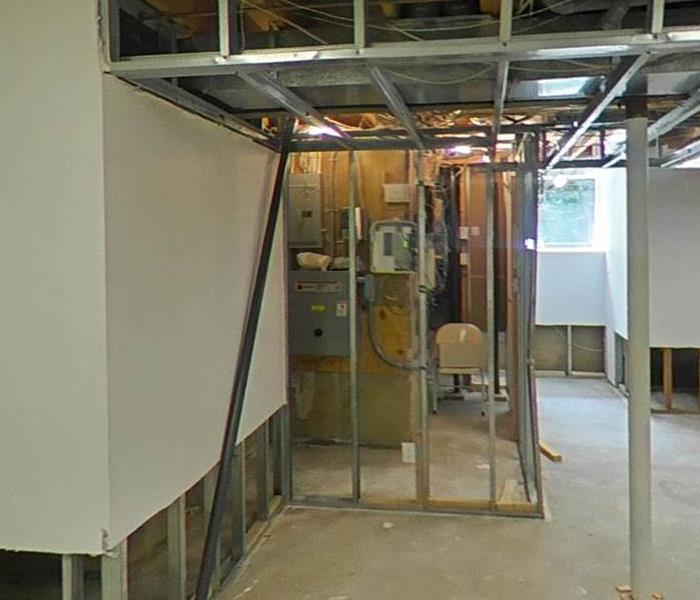 Entrust the process to the experts for your fire restoration emergency.
Entrust the process to the experts for your fire restoration emergency.
Experiencing a fire in your home or business is a devastating event that requires immediate action for restoration. While the idea of handling fire restoration on your own may seem appealing, it is important to recognize the potential dangers that accompany the do-it-yourself (DIY) approach. In this blog, we will shed light on the risks associated with DIY fire restoration and emphasize the importance of hiring professionals to ensure a safe and effective restoration process.
Safety Hazards
Fire damage restoration involves various hazards, including compromised structural integrity, electrical issues, and potential exposure to harmful substances such as smoke residue, soot, and asbestos. Professionals trained in fire restoration understand the proper safety protocols, have the necessary protective equipment, and know how to navigate hazardous situations. DIY attempts without proper knowledge and precautions can put you at risk of injury or long-term health issues.
Inadequate Assessment
Accurately assessing the extent of fire damage is crucial for an effective restoration plan. Professionals are experienced in identifying hidden damage, such as compromised wiring, water damage, or structural issues, which may not be apparent to an untrained eye. Failing to identify and address these underlying issues properly can lead to further damage or even recurring problems down the line.
Improper Cleaning Techniques
Fire damage restoration involves specialized cleaning techniques to remove soot, smoke residue, and other contaminants from various surfaces. Using incorrect cleaning methods or products can result in permanent damage to your belongings or property. Professionals have the expertise and knowledge to determine the appropriate cleaning techniques for specific materials and surfaces, ensuring effective restoration without causing additional harm.
Limited Equipment and Resources
DIY fire restoration often lacks access to the necessary tools and equipment required for a thorough and efficient restoration process. From industrial-grade cleaning solutions and specialized drying equipment to protective gear and odor removal systems, professionals utilize advanced resources to ensure comprehensive restoration. Without these resources, DIY attempts may fall short, leading to incomplete restoration and potential health hazards.
Timeliness and Efficiency
Prompt action is crucial after a fire to mitigate further damage and prevent mold growth, structural deterioration, and secondary water damage. Professionals are equipped to provide timely and efficient restoration services, utilizing their experience and streamlined processes to expedite the restoration process. DIY attempts may lack the efficiency required to address the full extent of fire damage within the necessary timeframe.
Insurance Claims
Dealing with insurance companies can be complex, especially during a fire restoration process. Professionals experienced in fire restoration often have established relationships with insurance companies and can assist with documenting the damage, providing evidence, and navigating the claims process. Their expertise can help ensure you receive the rightful compensation and support from your insurance provider.
In conclusion, the dangers of DIY fire restoration should not be underestimated. The risks to personal safety, potential for further damage, and lack of specialized equipment and expertise make it imperative to hire professionals for fire damage restoration. By entrusting the restoration process to experts, you can ensure a safe, effective, and efficient restoration journey, allowing you to recover and rebuild with peace of mind.
Mold Growth. The Role of Humidity in Mold Growth
10/24/2023 (Permalink)
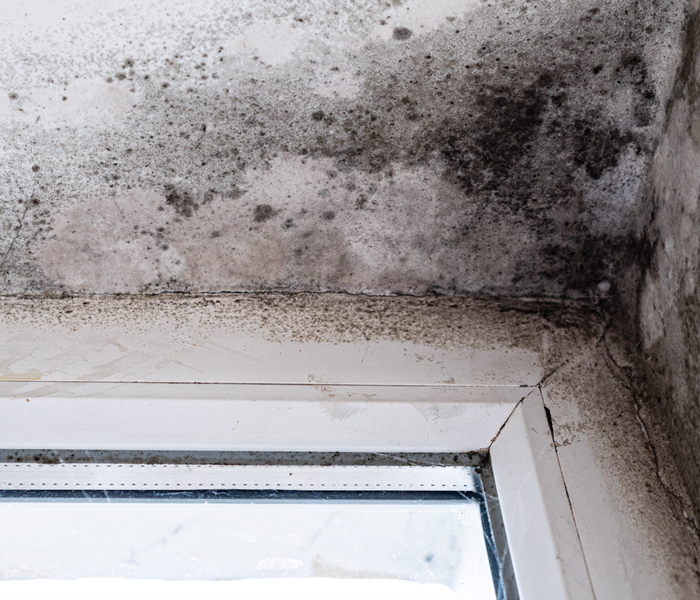 Maintaining humidity is crucial for preventing mold damage in your home or business.
Maintaining humidity is crucial for preventing mold damage in your home or business.
Mold growth is a common issue that can cause damage to homes and compromise indoor air quality. While the health concerns related to mold are well-documented, understanding the role of humidity in mold growth is crucial for preventing its proliferation. In this blog, we will explore the impact of humidity on mold growth and provide insights on controlling moisture levels to mitigate mold-related problems in your home.
The Ideal Conditions for Mold Growth
Mold requires specific conditions to flourish, and humidity plays a significant role in creating a favorable environment for its growth. High humidity, typically above 60%, provides the moisture necessary for mold spores to germinate and proliferate. Warm temperatures, usually between 77°F and 86°F, further enhance mold growth. Homes with poor ventilation and inadequate air circulation can exacerbate humidity levels, promoting the development of mold colonies. Understanding the correlation between humidity and mold growth is crucial in implementing effective preventive measures.
Recognizing High Humidity Levels
Identifying signs of high humidity can help homeowners take proactive steps to prevent mold growth. Condensation on windows, damp spots on walls or ceilings, and a musty odor are common indicators of excessive moisture in the air. Monitoring humidity levels using a hygrometer is also valuable in assessing the risk of mold growth. Relative humidity (RH) above 50% indicates increased moisture content and a conducive environment for mold spores to thrive.
Controlling Humidity Levels
Maintaining proper humidity levels is essential for preventing mold growth. The ideal relative humidity range is typically between 30% and 50%. Utilizing dehumidifiers in areas prone to excess moisture, such as basements or bathrooms, can effectively reduce humidity levels. Ensuring sufficient air circulation by using fans or opening windows can help regulate moisture. Fixing plumbing leaks promptly, insulating pipes to prevent condensation, and using proper ventilation systems are also vital strategies for controlling humidity and mitigating mold growth.
The Impact of Seasonal Changes on Humidity
Humidity levels can vary throughout the year due to seasonal changes. During the summer months, especially in regions with high humidity, the risk of mold growth tends to increase. Warm temperatures and persistent humidity create an environment conducive to mold spore activation and growth. In contrast, winter months often bring lower humidity levels due to decreased moisture in the air. However, certain indoor heating practices during winter, such as inadequately vented gas heaters or excessive use of humidifiers, can contribute to elevated humidity levels and potentially promote mold growth. Understanding and adapting to the seasonal fluctuations in humidity is key to preventing mold-related issues year-round.
Understanding the role of humidity in mold growth is crucial for preserving the integrity of your home. By monitoring and controlling humidity levels, homeowners can significantly reduce the risk of mold infestation. Implementing preventive measures and addressing moisture issues promptly will pave the way for a healthier and mold-free living environment.
How to Assess The Damage After A Water Loss
10/21/2023 (Permalink)
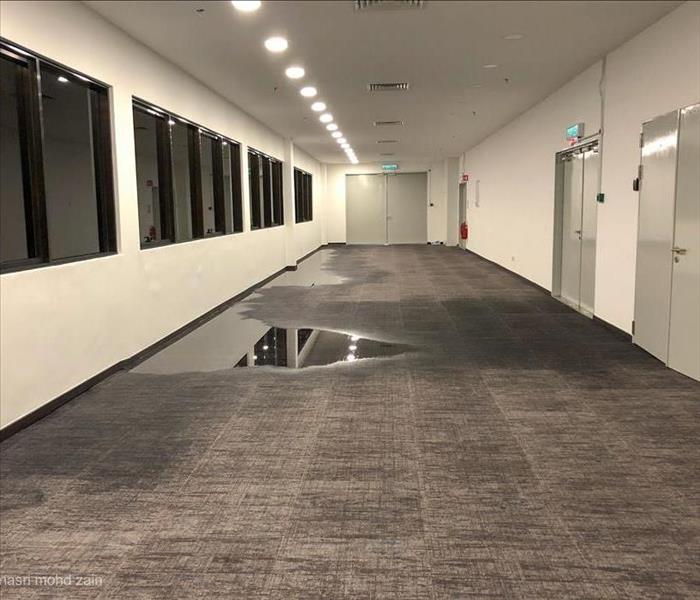 By relying on the expertise of restoration professionals, homeowners can be confident in the accurate assessment of structural water damage.
By relying on the expertise of restoration professionals, homeowners can be confident in the accurate assessment of structural water damage.
Water damage can be a devastating experience for homeowners. Whether it's a burst pipe, a roof leak, or a natural disaster, water intrusion can cause significant damage to the structure of a property. When faced with such a situation, it is crucial to seek the expertise of restoration professionals who can assess the extent of structural water damage. In this blog post, we will explore the process by which restoration professionals evaluate and assess structural water damage to initiate a successful restoration and recovery.
Initial Inspection
The assessment process begins with a thorough initial inspection of the affected area. Restoration professionals will examine the visible signs of water damage, such as water stains, discoloration, and sagging ceilings or walls. They will also look for moisture accumulation, mold growth, and any visible structural deterioration. This inspection allows them to identify the affected areas and determine the type and severity of the damage.
Moisture Detection
Even if water damage is not readily visible, restoration professionals use specialized equipment to detect moisture behind walls, under floors, and in other hidden areas. Moisture meters, thermal imaging cameras, and hygrometers help identify and measure the extent of moisture infiltration. This critical step ensures that no hidden areas of water damage are overlooked during the assessment.
Categorization of Water Damage
Restoration professionals categorize water damage into different classes and categories to determine the appropriate restoration approach. Classifications typically range from clean water damage (caused by water from a broken pipe or supply line) to contaminated water damage (caused by sewage backup or flooding). Categorization helps restoration professionals understand the potential risks associated with water damage and establish the necessary steps for restoration.
Structural Integrity Evaluation
Restoration professionals assess the structural integrity of the affected areas to determine if any compromises have occurred. This evaluation involves examining load-bearing structures, beams, walls, and foundations for signs of water damage, including deterioration, warping, or weakening. By carefully assessing the structural elements, restoration professionals can determine if any repairs or reinforcements are needed to restore the safety and stability of the property.
Documentation and Reporting
Throughout the assessment process, restoration professionals document their findings. Detailed reports are prepared, including photographs and descriptions of the observed damage. This documentation serves as a baseline for insurance claims and helps homeowners understand the extent of the damage and the necessary steps for restoration.
Restoration Plan
Based on their assessment, restoration professionals develop a comprehensive restoration plan customized to address the specific water damage issues found in the property. This plan may involve water extraction, drying, dehumidification, mold remediation, and structural repairs. The restoration plan aims to restore the property to its pre-damaged condition while mitigating further risks of water-related issues.
Ongoing Monitoring
As the restoration process unfolds, restoration professionals continue to monitor the progress to ensure the effectiveness of their methods. Regular checks are conducted to evaluate moisture levels, verify structural stability, and confirm the absence of hidden water damage. Monitoring efforts provide assurance that the restoration process is successful and that the property is returning to a safe and healthy state.
By relying on the expertise of restoration professionals, homeowners can be confident in the accurate assessment of structural water damage. Through thorough inspections, advanced moisture detection techniques, and careful evaluation of the structure, restoration professionals develop comprehensive restoration plans to address the damage effectively. Their knowledge and experience play a crucial role in restoring the property and providing homeowners with the peace of mind they need during the recovery process.
How Climate Change Alters Storm Frequency and Intensity on the East Coast
9/11/2023 (Permalink)
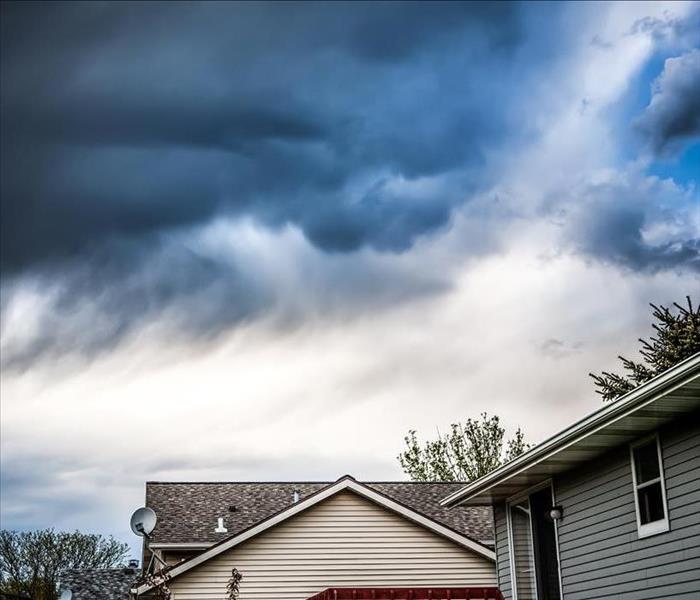 By acknowledging these changes, we can better prepare for the challenges that storms may bring and take steps to protect our homes.
By acknowledging these changes, we can better prepare for the challenges that storms may bring and take steps to protect our homes.
As homeowners and property owners on the East Coast, it's essential to be aware of the changing weather patterns and the impact climate change has on storm frequency and intensity in our region. Over the past few decades, there has been growing evidence linking climate change to more frequent and severe storms. In this blog, we'll explore how climate change affects storms on the East Coast and discuss steps you can take to prepare for the potential challenges they bring.
The Link Between Climate Change and Storms
Climate change, primarily driven by human activities, leads to a rise in global temperatures. As the Earth's temperature increases, it disrupts the balance of the atmosphere, causing changes in weather patterns. This disruption contributes to the intensification and increased frequency of storms on the East Coast.
More Frequent and Severe Hurricanes
The warming of the oceans provides more energy for hurricanes to develop and strengthen. Consequently, the East Coast has experienced an increase in the frequency and intensity of hurricanes in recent years. These storms can bring devastating winds, storm surges, and heavy rainfall, leading to extensive property damage and posing a significant threat to coastal communities.
Rising Sea Levels and Storm Surges
One of the consequences of climate change is the melting of polar ice caps, leading to rising sea levels. As a result, storm surges during hurricanes and severe storms have become more destructive, causing coastal flooding and erosion. Property owners along the coast should be especially vigilant and take necessary precautions to protect their homes from these increasing risks.
Increased Precipitation and Flooding
Climate change also alters precipitation patterns, causing more intense and prolonged rainfall events. This increased rainfall can lead to severe flooding, even in regions not typically prone to such disasters. Property owners should evaluate their homes' drainage systems and consider installing measures to mitigate the risk of flooding.
Heat Waves and Extreme Heat Events
In addition to hurricanes and heavy rainfall, climate change contributes to more frequent and prolonged heatwaves on the East Coast. Extreme heat events can damage properties, strain energy resources, and pose risks to residents. Taking measures to improve your home's energy efficiency and installing cooling systems can help you stay comfortable during such extreme weather events.
Preparing for Climate Change-Related Storms
To better cope with the impact of climate change on storm frequency and intensity, homeowners and property owners can take several proactive steps:
- Stay Informed: Keep yourself updated on climate change research and storm forecasts in your area. This information can help you make informed decisions to protect your property and loved ones.
- Invest in Resilient Infrastructure: Consider fortifying your home against potential storm damage by installing storm shutters, reinforcing doors and windows, and securing roof structures.
- Elevate and Protect: If you live in a flood-prone area, elevate your home and consider investing in flood insurance to mitigate the financial impact of potential flooding.
Understanding the impact of climate change on storm frequency and intensity on the East Coast is vital for homeowners and property owners. By acknowledging these changes, we can better prepare for the challenges that storms may bring and take steps to protect our homes, communities, and the environment. Let's work together to build resilience and embrace sustainable practices to mitigate the effects of climate change and safeguard our properties for future generations.
Flames and Finances: How Commercial Property Insurance Shields Your Business from Fire Damage
8/14/2023 (Permalink)
 Commercial property insurance is an indispensable tool for shielding your business from the devastating effects of fire damage.
Commercial property insurance is an indispensable tool for shielding your business from the devastating effects of fire damage.
A fire can pose a severe threat to any business, causing significant financial losses and disruption to operations. As a responsible property owner, it's essential to protect your business from such unforeseen disasters. Commercial property insurance serves as a safeguard against fire damage, ensuring your business can recover and rebuild in the aftermath of a fire. In this article, we will explore how commercial property insurance shields your business from fire damage and the critical role it plays in preserving your financial well-being.
Understanding Commercial Property Insurance
Commercial property insurance is a vital form of coverage designed to protect businesses from various risks, including fire damage. This policy typically covers the physical assets of your business, such as the building, equipment, inventory, furniture, and fixtures, against damage or loss due to fire and other covered perils.
Fire Damage Coverage under Commercial Property Insurance
In the event of a fire, your commercial property insurance will kick in to cover the repair, replacement, or rebuilding costs for the damaged or destroyed property. This can include structural repairs, smoke damage cleanup, replacing damaged equipment, and restocking inventory. Having this coverage helps mitigate the financial burden of rebuilding and ensures your business can recover swiftly.
Business Interruption Coverage
In addition to covering the physical damage, commercial property insurance often includes business interruption coverage. This aspect of the policy provides financial assistance to help your business continue operating, even if it temporarily cannot due to fire damage. It can compensate for lost income, ongoing expenses, and even additional expenses incurred to maintain operations during the recovery period.
Protecting Your Financial Investment
For most businesses, the property represents a substantial financial investment. Without adequate insurance coverage, a fire could lead to devastating financial losses that could jeopardize the very existence of the business. Commercial property insurance acts as a safety net, allowing you to protect the capital you've invested in your business and providing peace of mind that your financial future is secure.
Ensuring Business Resilience
Fire damage can lead to business disruptions, revenue losses, and potential liability issues. By investing in commercial property insurance, you create a foundation for business resilience. With proper coverage, you can focus on rebuilding and getting back to normal operations without worrying about the crippling financial impact of fire damage.
Navigating the Insurance Process
After a fire incident, dealing with insurance claims can be complex and time-consuming. It's crucial to document the damage thoroughly, provide accurate records, and work with your insurance provider to ensure a smooth claims process. Having commercial property insurance simplifies this process, as your insurance company will guide you through the necessary steps and help you receive fair compensation.
Commercial property insurance is an indispensable tool for shielding your business from the devastating effects of fire damage. It not only covers the costs of property repairs and replacement but also offers crucial business interruption coverage to help your business stay afloat during challenging times. By investing in this vital protection, you can ensure the financial stability and resilience of your business, allowing you to focus on what truly matters – rebuilding and continuing to thrive in the face of adversity. Remember, seeking the guidance of an experienced insurance agent can help you customize the coverage to meet your specific business needs and provide comprehensive protection for your valuable assets.
Sewage Cleanup Dos and Don'ts: Expert Advice for Homeowners
7/25/2023 (Permalink)
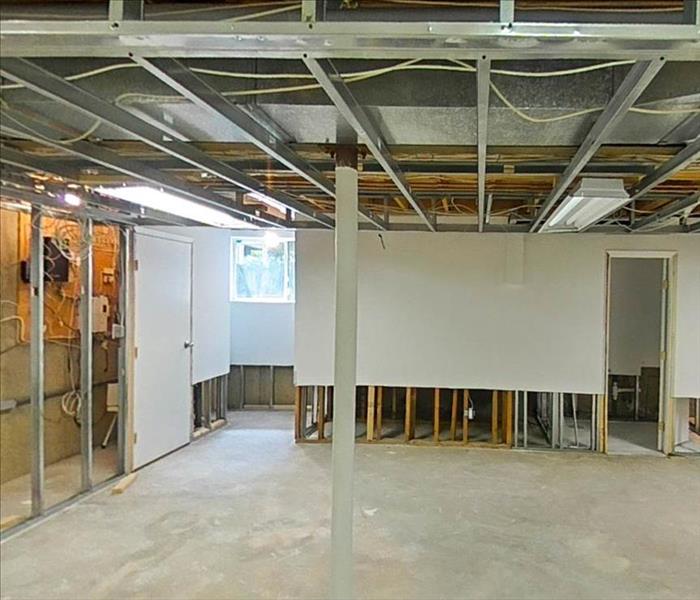 Know what to do and what not to do after biohazard and sewage damage in your home.
Know what to do and what not to do after biohazard and sewage damage in your home.
Dealing with a sewage backup can be one of the most distressing experiences for homeowners. Besides the foul odor and unsightly mess, sewage backups pose serious risks if not handled properly. When faced with such a situation, knowing the right steps to take and what to avoid can make all the difference in minimizing damage and protecting your well-being. In this blog, we will provide expert advice on sewage cleanup dos and don'ts, empowering homeowners to tackle this challenging issue safely and efficiently.
1. DO Prioritize Safety
Your safety and the safety of your family should be the top priority during sewage cleanup. Sewage water is highly contaminated and may contain harmful bacteria and pathogens. Always wear appropriate protective gear, such as waterproof gloves, boots, and eye protection, before entering the affected area.
2. DON'T Delay Cleanup
Act promptly when you encounter a sewage backup. Delaying cleanup can exacerbate the damage and increase the risk of mold growth and further contamination. The longer sewage water sits in your home, the more difficult and costly the cleanup process becomes.
3. DO Turn Off Utilities
If it is safe to do so, turn off the electricity and gas supply to the affected area to avoid potential electrical hazards and gas leaks.
4. DON'T Use Household Cleaners
Avoid using regular household cleaners for sewage cleanup. They are not effective in eliminating sewage-related contaminants, and mixing them with sewage can create harmful fumes. Instead, rely on professional-grade disinfectants and cleaning agents.
5. DO Ventilate the Area
Open windows and use fans to improve ventilation in the affected area. Adequate airflow helps in drying out the space and reducing the risk of mold growth.
6. DON'T Use Air Circulation from the Affected Area
Avoid using fans or air conditioning that circulate air from the sewage-affected area to other parts of your home. This can spread contaminants and pose health risks.
7. DO Remove Standing Water
Use a wet-dry vacuum or pumps to remove standing sewage water from your home. Dispose of the water in a proper sewage disposal site.
8. DON'T Ignore Absorbent Materials
Avoid salvaging absorbent materials like carpets, padding, and upholstered furniture that have been contaminated by sewage. These materials are challenging to clean thoroughly and can become breeding grounds for bacteria and mold.
9. DO Disinfect and Sanitize
Thoroughly disinfect and sanitize all affected surfaces and items using appropriate cleaning agents. This step is crucial in eliminating harmful bacteria and preventing the spread of diseases.
10. DON'T Hesitate to Seek Professional Help
Sewage cleanup is a complex and hazardous task that requires specialized expertise and equipment. If you are unsure about handling the cleanup yourself or if the extent of the damage is significant, don't hesitate to contact a professional sewage cleanup and restoration service like SERVPRO of Northern Queens.
Sewage cleanup is a challenging process that demands careful attention and adherence to safety guidelines. By following the dos and don'ts provided by experts, homeowners can minimize damage and health risks associated with sewage backups. Remember, safety comes first, and seeking professional assistance ensures a thorough and efficient cleanup, helping you restore your home to a safe and habitable condition. If faced with a sewage backup, take immediate action and approach the cleanup process diligently to protect both your property and your family's well-being.
The Top 10 Most Important Steps to Take if Your Basement Floods
7/18/2023 (Permalink)
Discovering a flooded basement can be overwhelming and stressful for any homeowner. Acting swiftly and knowing the correct steps to take can make a significant difference in minimizing damage and ensuring a safe restoration process. In this blog, we will outline the 10 most important things to do if your basement floods, providing you with a clear action plan to follow during such an emergency.
Ensure Personal Safety
Before entering a flooded basement, prioritize your safety. Turn off the power supply to the affected area to avoid electrical hazards. If standing water is present and the power supply cannot be safely disconnected, it is essential to contact a professional restoration company to handle the situation.
Call a Professional Restoration Company
Contact a reputable disaster restoration company specializing in water damage cleanup and restoration, such as our SERVPRO of Northern Queen's team. Experienced professionals have the expertise, equipment, and knowledge to assess the damage, extract water, and initiate the drying process promptly. Their prompt response is crucial to prevent further damage and mold growth.
Document the Damage
Take photographs or videos of the flooded area and any damaged belongings. These visual records will be valuable when filing an insurance claim and can help expedite the process.
Mitigate Further Damage
If it is safe to do so, take steps to prevent further damage. This may include shutting off the water source causing the flood, sealing any visible cracks or gaps in the foundation, or deploying sandbags to redirect water away from the basement.
Remove Water Safely
Depending on the amount of water present, you may need to use a wet/dry vacuum, pumps, or buckets to remove standing water. However, it's important to note that extensive water damage requires professional extraction methods to ensure thorough drying and prevent long-term issues such as mold growth.
Dry and Dehumidify
Properly drying the affected area is crucial to prevent mold growth and secondary damage. Open windows use fans, and dehumidifiers to facilitate the drying process. A professional restoration company will have specialized equipment to expedite drying and monitor moisture levels.
Salvage Valuable Items
Remove any salvageable items from the flooded area and place them in a dry and safe location. Clean and disinfect items as necessary to prevent mold growth.
Dispose of Damaged Items
Properly dispose of damaged items that cannot be salvaged. Waterlogged materials can harbor mold and pose health risks if not properly discarded.
Conduct Thorough Cleaning and Disinfection
Thoroughly clean and disinfect the affected area, including walls, floors, and any remaining belongings. Use appropriate cleaning agents to eliminate bacteria and inhibit mold growth.
Consult with Your Insurance Company
Notify your insurance company about the basement flood as soon as possible. Provide them with the necessary documentation and follow their instructions for filing a claim. An experienced restoration company can assist you with the claim process and provide detailed documentation.
Knowing the essential steps to take if your basement floods can help you navigate through this stressful situation more effectively. Remember to prioritize your safety, contact a professional restoration company, document the damage, mitigate further damage, and follow proper drying and cleaning procedures. By acting swiftly and seeking professional assistance, you can minimize damage, ensure a safe restoration process, and restore your basement to its pre-flood condition.


 24/7 Emergency Service
24/7 Emergency Service





